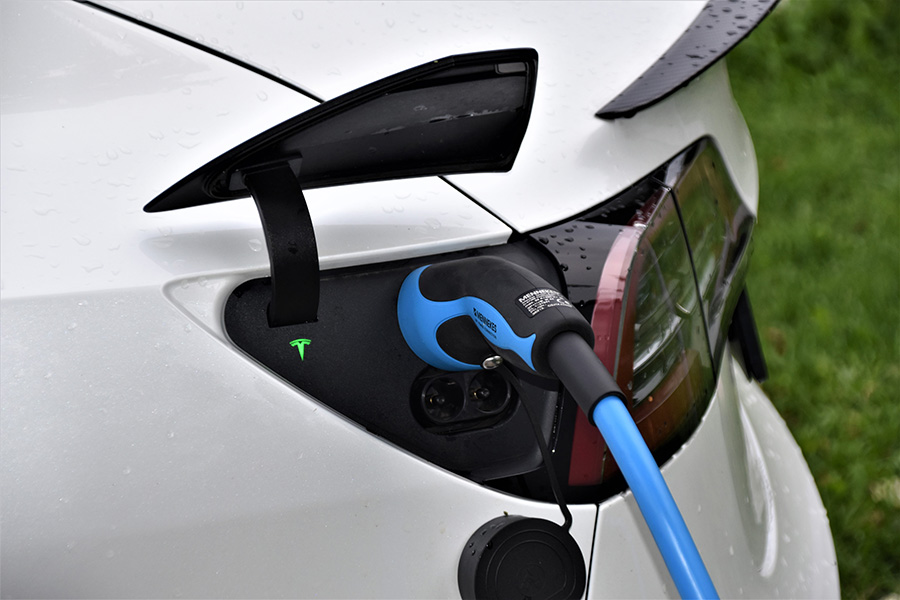The Three Levels of Electric Vehicle Charging, Explained
ramaker insights
The Three Levels of Electric Vehicle Charging, Explained
In 2022, electric vehicles (EVs) are becoming mainstream technology. Public policy and user demand have prompted major automakers like General Motors, Jaguar, Mercedes-Benz, Volkswagen, and Volvo to go fully electric by 2035 or sooner. In turn, the Edison Electric Institute estimates that 22 million EVs will hit US roads in 2030.
Given the uptick in EV adoption, the United States needs more EV charging stations to power these new vehicles—and to power the continued growth of the EV market.
Recent federal and state funding packages reflect the urgent need for fast charging infrastructure. The $1.2 trillion federal infrastructure package passed in November 2021 includes $7.5 billion earmarked for building EV charging stations across the United States. This funding should accelerate EV adoption in the US by providing more EV chargers when and where users need them.
In this post, we explain the differences between Level 1, Level 2, and Level 3 EV chargers. We describe each level of charging in detail and outline how each type of charger is used.

What are the different levels of EV charging?
There are three levels of electric vehicle charging stations: Level 1, Level 2, and Level 3. Level 1 chargers can add 4–5 miles of range per hour of charging while Level 2 chargers can add 12–80 miles of range per hour. Level 3 chargers (sometimes called DC fast chargers) are the fastest of the bunch. They can power some EVs to an 80-percent charge in 20–30 minutes.
In general, most Level 1 chargers are installed in residential settings. Many of the chargers found in public, commercial, and workplace environments are Level 2 chargers. Of the three types of electric vehicle charging stations, Level 3 chargers are the most like gas stations. Level 3 chargers are typically installed at commercial charging stations.
Want to get technical? In the next section, we explore how Level 1, Level 2, and Level 3 chargers work—and where each type of electric vehicle charging station works best.


Level 1 EV Chargers
The most basic level of EV charging is Level 1. Level 1 chargers are powered by the same 120-volt outlets that coffee makers and iPhone chargers use. These types of electric vehicle chargers don’t pack the same punch as Level 2 and Level 3 chargers. They typically add 4 to 5 miles of range per hour of charging.
How Level 1 Electric Vehicle Charging Stations are Used
Given their relatively slow charging speed, Level 1 chargers are rarely used outside of residential settings. Nonetheless, this level of charging may be sufficient for users with shorter commutes and users who can afford to charge their vehicles for long periods of time. Level 1 chargers are also useful for plug-in hybrid electric vehicles, which have smaller batteries.
Level 2 EV Chargers
Most public chargers that exist today—say, the ones outside your local supermarket or the ones in your apartment complex’s parking garage—are Level 2 electric vehicle chargers. Depending on the output of the charger and the EV’s charge rate, a Level 2 charger can add 12–80 miles of range per hour. These chargers typically use 208–240-volt circuits and can provide upwards of 80 amps of power.
How Level 2 Electric Vehicle Charging Stations are Used
Range anxiety begone! Level 2 chargers can charge vehicles up to 10 times faster than Level 1 chargers, making them ideal for residential, commercial, and workplace environments. When installed in residential environments, Level 2 chargers can generally provide enough power to recharge vehicles overnight. With relatively fast charging speeds, these chargers are also convenient for short-term use. Users can plug in their EVs while shopping or during a day at the office.

Level 3 EV Chargers
Level 3 chargers, also known as DC fast chargers, are the fastest type of EV charging stations. While Level 1 and Level 2 chargers use alternating current (AC) power, Level 3 chargers use direct current (DC) power. These chargers can power some EVs to an 80-percent charge in 20–30 minutes.
How Level 3 Electric Vehicle Charging Stations are Used
Level 3 charging stations require high-voltage supply, making them impractical for home use. These types of chargers are typically found at commercial charging stations. Among the three types of EV chargers, Level 3 charging stations are the most like gas stations. In fact, although Level 3 EV chargers are costly, some gas stations are even installing them to retain customers.
Design and Engineering for EV Charging Stations
Ramaker partners with industry-leading developers and contractors to engineer, design, and implement Level 1, Level 2, and Level 3 EV charging systems across the US. Our portfolio includes charging stations for electric cars, buses, trucks, and yard tractors in commercial, municipal, residential, and retail environments.
Need a design and engineering partner for your next EV charging station implementation? Get in touch with the Ramaker team.



